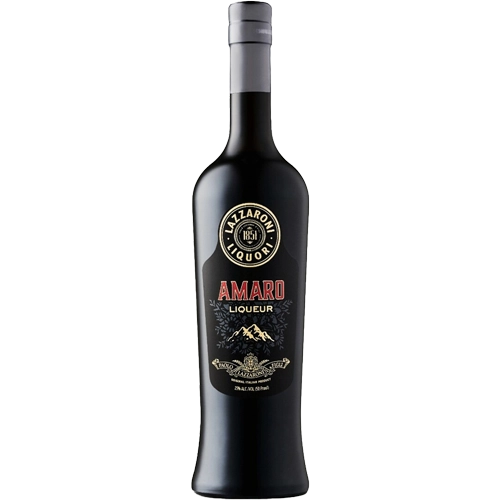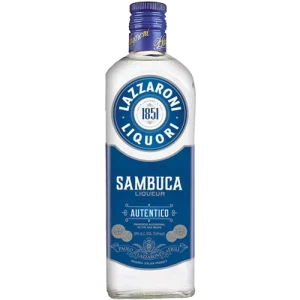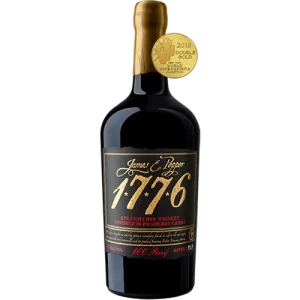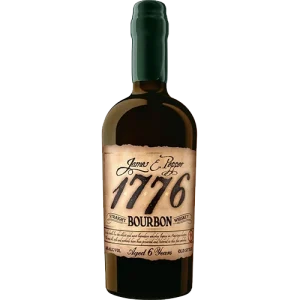Lazzaroni Amaro
Amaro is obtained through the infusion of particular and selected herbs and medicinal plants, roots, and berries from Valtellina (Teglio), the place of origin of the Lazzaroni family. It is still one of the most classic Italian digestives, today rediscovered as a base for cocktails. It is a delicious bitter liqueur made through the infusion of selected herbs, roots, and berries grown in Valtellina (Teglio), Lazzaroni’s family hometown. It is the most common Italian digestif, rediscovered today as a cocktail ingredient.
Liquor born at the end of 1800, still prepared according to the old family recipe jealously guarded. An explosion of flavors in a single product: a fine bitter/sweet balance. Herbs, roots, and berries are processed separately, respecting all the doses and timings (infusions, extractions, maceration, etc.) so that we can get only the finest of each aroma. Once the infusion of herbs mixed with water and sugar is done, the product must rest for at least 48 hours before being bottled. In this way, the Amaro becomes round and aromatic and every palate can appreciate the over 60 herbs it is obtained from.
FEATURES
- INGREDIENTS: Water, sugar, alcoholic herbs infusion, natural flavors. Colored with caramel (E150b).
- USE: The Amaro is one of the most typical Italian after-dinner. You can drink it straight, with ice, or with an orange zest.
Review – 94 Points – International Review of Spirits – Gold Medal – Exceptional
“Brown color. Rich aromas of peppermint oil, cola, and baking spices with a satiny, lively, moderately sweet medium-full body and a warming, complex, very long bitter roots and herbs, pine, pepper, and honeyed grapefruit finish. A sensationally drinkable minty Amaro.”
Product uniqueness
Fernet was born in the 17th century near Milan. In the local language “fernet” (fer net) means clean iron, referring to the hot iron rod, that used to be soaked in the alcoholic infusion, to make it shine. Fernet is, therefore, an infusion and not a distillate.
Fernet boasts some features that make it unique and (maybe) inimitable. To make the proper fernet, in addition to the common ingredients used in many different infusions, you need to have at your disposal particular herbs, roots, bulbs, and pistils of different provenance from the historical recipe.
AMARETTO LAZZARONI 1851 & FAMILY LAZZARONI HISTORY
Paolo Lazzaroni & Figli SpA is an Italian food company, founded in Monza in 1869, by Paolo Lazzaroni and his sons Pietro and Luigi.
Paolo Lazzaroni & Figli is one of the two food companies that derive from the Lazzaroni family: it was founded in Monza in 1869, by Paolo Lazzaroni and his sons Pietro and Luigi.
Paolo was the second son of Carlo Lazzaroni (1774-1835), who had started a confectionery production business in Saronno, which was then carried on by his other son Davide (whose sons later founded D. Lazzaroni & C. ).
Paolo had moved to Monza in 1852 (or according to others in 1855 ), initially creating a grocery store and then founding the company, which bought and sold spices, coffee, cured meats, chocolate, sweets, candied fruit, and liqueurs. According to tradition, the recipe for the amaretto liqueur which is sold under the brand “Amaretto Lazzaroni 1851” belongs to this era.
In 1927 the two companies of the Lazzaroni family merged into a single structure, maintaining the two biscuits and liqueurs branches. In 1984 the biscuit branch (precisely D. Lazzaroni & C. ) was sold to the American multinational Campbell’s, while Paolo Lazzaroni & Figli remained in the hands of Paolo Lazzaroni of the same name, who subsequently decided to also undertake confectionery production, creating the “Chiostro di Saronno” brand.
Starting from 2004, Paolo Lazzaroni & Figli was the subject of a long legal battle started by D. Lazzaroni & C., as soon as it began producing amaretti biscuits in Saronno (for which D. Lazzaroni & C. holds the registered trademark ” Amaretti di Saronno “). At a certain point, in 2009, the affair also saw the temporary seizure of Paolo Lazzaroni & Figli’s products, but it finally ended in 2013 with acquittal.




